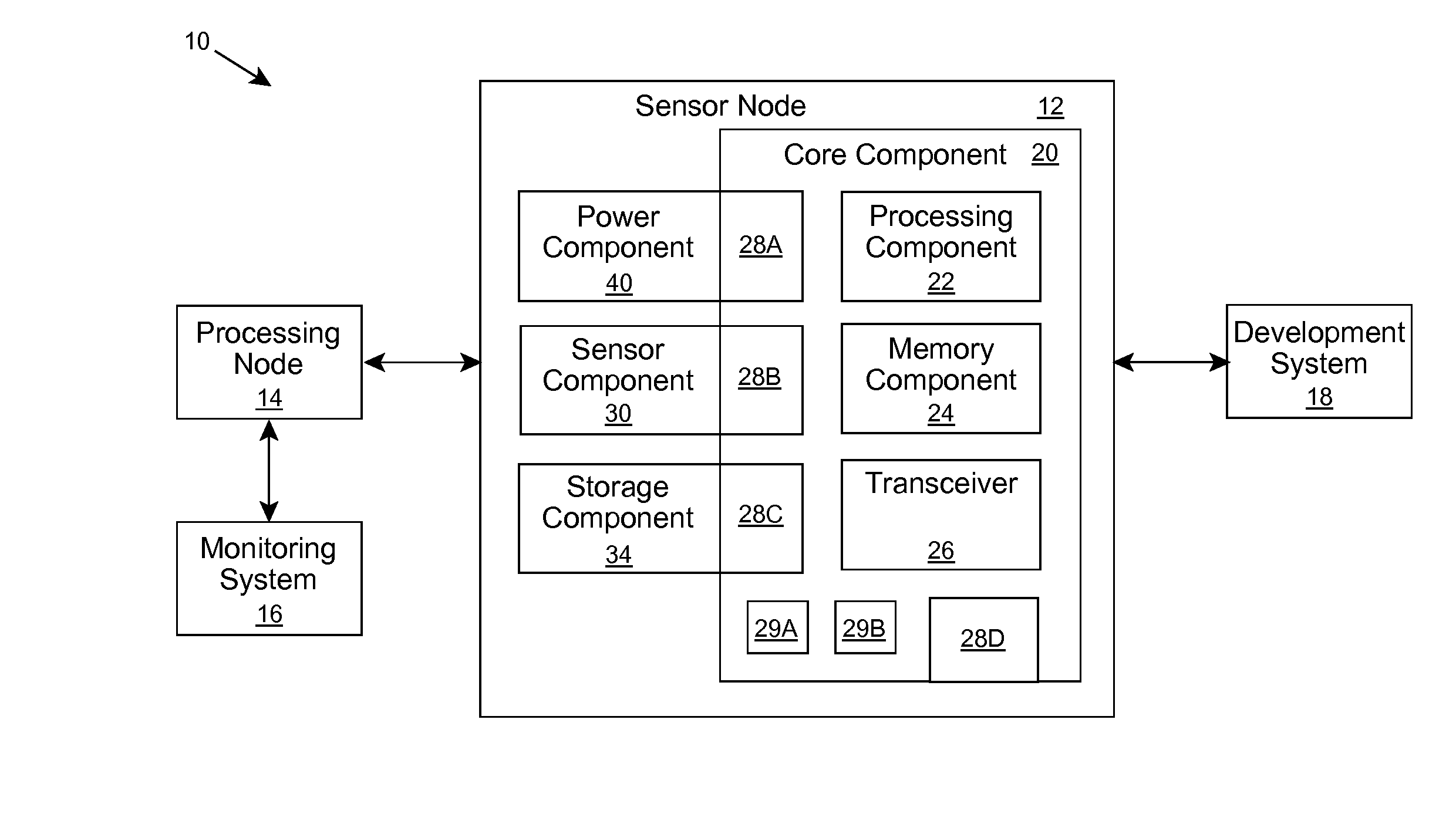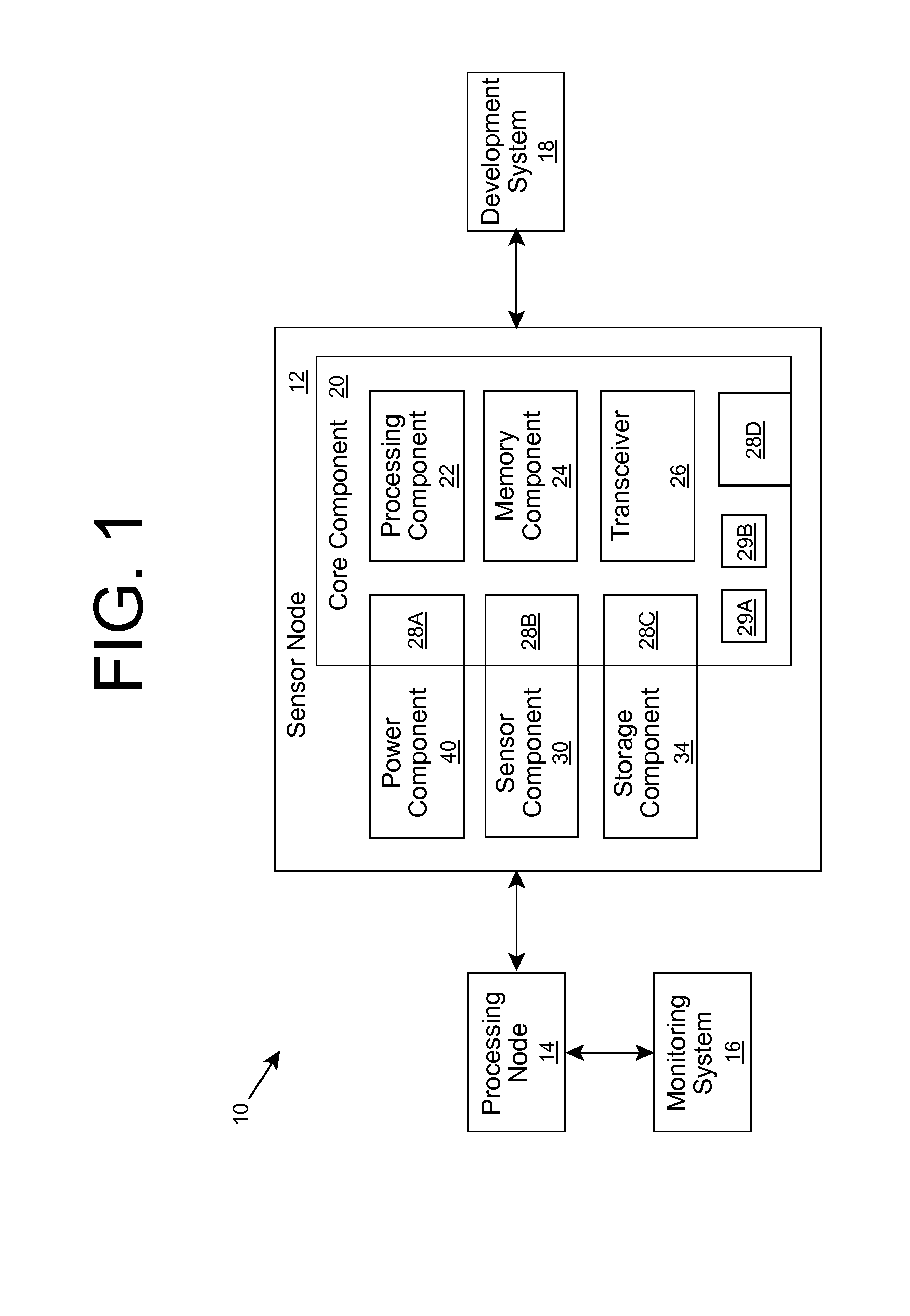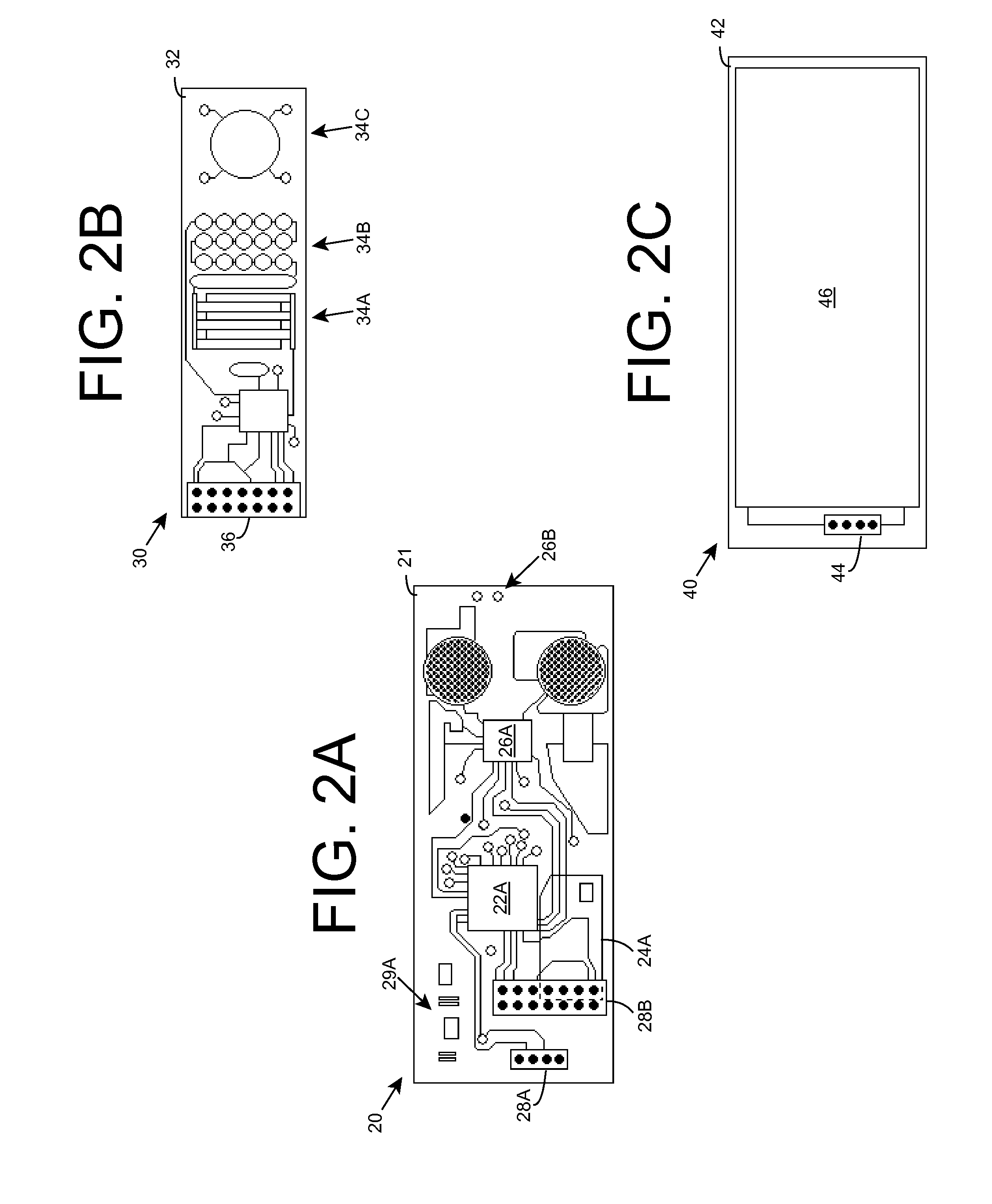Sensor system
a sensor and node technology, applied in the field of monitoring systems, can solve the problems of not being optimized for actual implementation, not being intended for nor optimized for use, and one sensor node cannot be reconfigured to perform as an alternative type of sensor node,
- Summary
- Abstract
- Description
- Claims
- Application Information
AI Technical Summary
Benefits of technology
Problems solved by technology
Method used
Image
Examples
Embodiment Construction
[0030]The inventors recognize that current sensor node designs can be improved. In particular, current sensor node designs are inflexible due to their requirements for re-design for each new application and / or power source that is desired. Further, current sensor nodes are not capable of being deployed for applications that require high sampling rates and / or high transmission rates. Still further, current power requirements of sensor nodes results in an inability to perform independently (e.g., using a battery and / or power harvesting device) without a disproportionately large battery and / or power harvesting device (e.g., several times the volume of the sensing device).
[0031]As indicated above, aspects of the invention provide an improved sensor node for use in a sensor system. In particular, the sensor system incorporates a set of sensor nodes for acquiring sensor data. Each sensor node is manufactured using separate components that can be matched according to a particular applicati...
PUM
 Login to View More
Login to View More Abstract
Description
Claims
Application Information
 Login to View More
Login to View More - Generate Ideas
- Intellectual Property
- Life Sciences
- Materials
- Tech Scout
- Unparalleled Data Quality
- Higher Quality Content
- 60% Fewer Hallucinations
Browse by: Latest US Patents, China's latest patents, Technical Efficacy Thesaurus, Application Domain, Technology Topic, Popular Technical Reports.
© 2025 PatSnap. All rights reserved.Legal|Privacy policy|Modern Slavery Act Transparency Statement|Sitemap|About US| Contact US: help@patsnap.com



